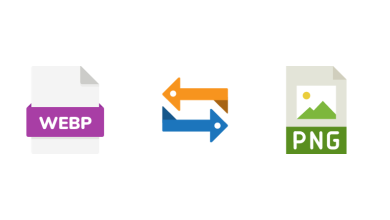In a business landscape where digital capabilities increasingly determine competitive advantage, one challenge consistently ranks among executives’ top concerns: finding the right talent to execute ambitious digital initiatives. The stark reality is that demand for specialized digital expertise far outpaces supply, creating a digital talent gap that threatens to derail or delay critical projects across industries.
This shortage comes at a particularly challenging time. Organizations face mounting pressure to implement advanced technologies—from artificial intelligence and machine learning to cloud-native architectures and data analytics platforms—while simultaneously maintaining and modernizing existing systems. Each of these domains requires specialized knowledge that’s increasingly difficult to source through traditional hiring channels.
The implications of this talent shortage extend beyond mere staffing challenges. When projects lack the right expertise, they face higher risks of delays, budget overruns, or outright failure. Digital initiatives that might otherwise transform business models or create significant competitive advantages remain partially implemented or fail to deliver their potential value.
Yet amid these challenges, forward-thinking organizations are finding creative solutions to overcome talent constraints. By rethinking traditional approaches to team building and embracing more flexible models for accessing expertise, these companies are successfully executing their digital roadmaps despite the competitive talent market.
This article explores practical strategies for navigating the digital talent landscape, ensuring your projects have the expertise they need to succeed without being derailed by hiring challenges or skill shortages.
Key Strategies for Overcoming the Digital Talent Gap
1. Identifying the Specific Expertise You Need
Beyond Generic Job Descriptions
One of the most common mistakes organizations make when addressing talent needs—or when trying to find an executive search firm—is defining requirements too broadly. Generic job descriptions like “full-stack developer” or “data scientist” often attract candidates whose specific skills don’t align with your actual project needs.
Instead, begin by mapping the precise technical competencies your initiative requires. Break down projects into specific components—from particular programming languages and frameworks to experience with specific platforms or methodologies. This granular understanding allows you to target your talent search more effectively and evaluate potential candidates against genuinely relevant criteria.
Skills Mapping and Gap Analysis
Before launching any recruitment effort, conduct a thorough assessment of your existing internal capabilities. This process often reveals that you may have more relevant expertise in-house than initially assumed, though perhaps distributed across different teams or departments.
Create a detailed matrix that maps required skills against available internal resources, clearly identifying gaps that need external support. This approach helps prioritize which expertise must be sourced externally versus areas where internal skill development might be sufficient.
Three Essential Components of Effective Skills Mapping:
- Technical Depth – Specific technologies, languages, platforms, and tools required
- Experience Context – Particular industries, applications, or use cases where expertise should have been applied
- Supporting Capabilities – Adjacent skills like security knowledge, compliance understanding, or specific methodologies
This detailed understanding becomes particularly valuable when exploring specialized talent sources like Poland team augmentation, where having precise requirements helps ensure you’re matched with digital talent possessing exactly the expertise your project demands.
2. Exploring Global Talent Solutions
Geographic Flexibility for Specialized Skills
When specific digital expertise proves scarce in your local market, expanding your search internationally often reveals untapped talent pools. Many regions have developed specialized technical ecosystems that produce professionals with exactly the skills that might be rare in your location.
For example, Poland has emerged as a significant European technology hub with particularly strong expertise in software development, data engineering, and cloud architecture. Polish technical universities produce thousands of highly qualified graduates annually, creating a deep talent pool with strong technical foundations and excellent English proficiency.
Strategic Augmentation Approaches
Team augmentation provides a structured approach to incorporating external expertise into your projects without the complexity of establishing international offices or navigating employment laws across multiple countries.
This model allows you to specifically target the digital talent gap in your organization, bringing in precisely the skills you need for the duration required. Whether you need specialized developers for a specific project phase or ongoing expertise for continuous development, augmentation offers flexibility that traditional hiring often can’t match.
Cultural and Operational Alignment
When integrating international talent into your digital team, consider both technical and operational compatibility. Regions with similar business cultures, overlapping working hours, and compatible communication styles often prove more successful for collaboration than options that might appear less expensive but create significant friction in daily operations.
Countries like Poland offer particular advantages here, with business cultures that align well with Western practices, time zones that provide substantial overlap with both European and American working hours, and strong English language skills that minimize communication barriers.
3. Hiring for Flexibility and Scalability
T-Shaped Skills for Adaptive Capacity
When building your digital team, prioritize professionals who demonstrate both depth in critical areas and breadth across adjacent domains—often described as “T-shaped” skills profiles. These individuals typically adapt more readily to evolving project needs and can bridge gaps between specialized roles.
This approach proves particularly valuable when addressing the digital talent gap, as team members with adaptable skill sets can often expand their contributions beyond their core expertise when needed, providing crucial flexibility during talent shortages.
Building Scalable Team Structures
Rather than attempting to hire for every specialized need permanently, design team structures should be designed to scale through the strategic use of contingent resources. This might include a stable core of full-time employees with deep institutional knowledge, supplemented by specialists engaged through staff augmentation, freelance arrangements, or consulting partnerships.
This hybrid approach allows your digital team to expand and contract as needed, accessing specialized expertise for specific project phases without maintaining that capacity permanently. The result is greater cost efficiency while still ensuring you have the talent needed at critical junctures.
4. Bridging Skill Gaps with Training and Upskilling
Strategic Knowledge Transfer
When your projects require specialized expertise that’s both scarce and likely to be needed long-term, consider pairing external specialists with internal team members explicitly focused on knowledge acquisition. This approach addresses immediate project needs while simultaneously building sustainable internal capabilities.
For example, you might engage an external expert in a particular technology through team augmentation while assigning internal staff to work closely with them, with explicit learning objectives beyond the immediate project deliverables. This investment typically yields returns across multiple future initiatives.
Continuous Learning Infrastructure
Establishing systematic approaches to continuous skill development helps reduce future talent gaps before they become critical. Organizations that thrive despite the competitive talent landscape typically maintain robust learning ecosystems, including:
- Dedicated time allocations for skill development
- Internal knowledge-sharing platforms and communities of practice
- Access to high-quality learning resources aligned with strategic technology directions
- Recognition systems that reward skill acquisition and knowledge sharing
This infrastructure enables your organization to develop capabilities organically, reducing dependence on external hiring for every new technology need.
5. Leveraging Remote Work Models Effectively
Beyond Emergency Remote
The rapid shift to remote work demonstrated that many digital roles can be performed effectively outside traditional office settings. Forward-thinking organizations are now building on this experience to create deliberate, sustainable remote work models that expand their talent access while improving team effectiveness.
Rather than treating remote work as a temporary necessity or employee benefit, approach it as a strategic advantage that allows you to transcend geographic limitations in your talent strategy. This perspective transforms the challenge of the digital talent gap from a local constraint to a global opportunity.
Structured Collaboration Frameworks
Successful distributed digital teams require more than just video conferencing tools. They need thoughtfully designed collaboration frameworks that create clarity around how work flows between team members, regardless of location.
Develop explicit protocols for:
- Synchronous vs. asynchronous communication expectations
- Documentation standards that preserve knowledge and context
- Decision-making processes that function across time zones
- Team rituals that build cohesion despite physical distance
These structures enable effective integration of talent across locations, making it practical to engage specialists wherever they’re available rather than limiting your search to specific geographic regions.
The Multifaceted Approach to Overcome Talent Gaps
Overcoming the digital talent gap isn’t just about filling immediate project needs—it’s about establishing sustainable approaches to accessing expertise in an increasingly competitive landscape. The most successful organizations address this challenge through a combination of strategies, creating flexible talent ecosystems rather than relying on any single approach.
By precisely identifying your requirements, exploring global talent sources, building adaptable team structures, investing in continuous learning, and leveraging effective remote work models, you can ensure your digital initiatives have the expertise they need despite broader market constraints.
This multifaceted approach doesn’t just solve immediate staffing challenges; it creates fundamental resilience in your digital capabilities. As technology continues to evolve and new specialties emerge, your organization will be positioned to adapt quickly, identifying and integrating the expertise needed for whatever opportunities or challenges emerge.
In a business environment where digital capabilities increasingly determine competitive positioning, this talent agility may prove as important as the technical skills themselves. The organizations that thrive won’t necessarily be those with the largest permanent technical teams, but those that can most effectively access and integrate the right expertise at the right time, regardless of where that talent resides.






